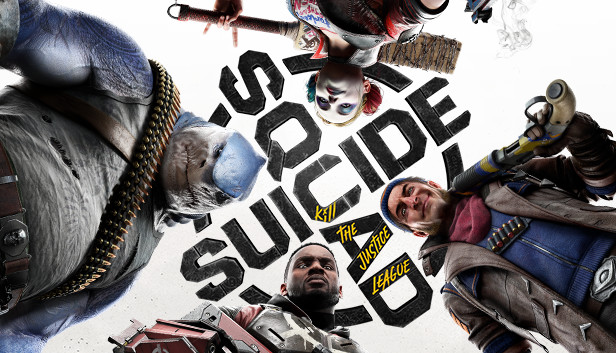In-Depth Video Game Review: Suicide Squad: Kill the Justice League
Even the most ardent fans can become disillusioned by lackluster gameplay, turning fervent excitement into tepid engagement with diminishing returns.
Suicide Squad: Kill the Justice League promised explosive action and witty writing, yet somehow managed to fumble its engaging narrative with monotonous mission loops—a notable flaw for an aspiration-filled live service.
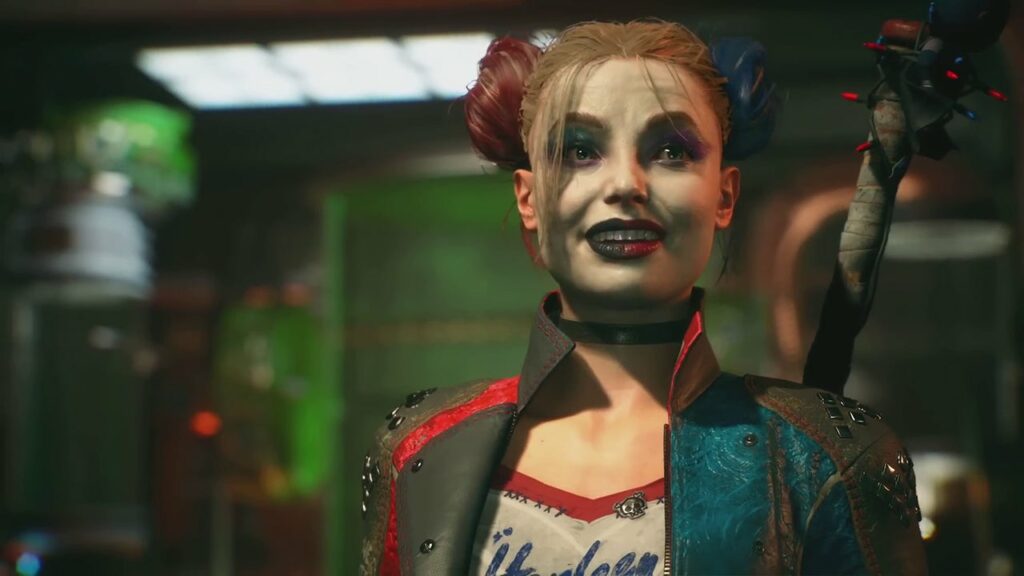
Storytelling and Character Dynamics
Rocksteady’s storytelling prowess shines despite gameplay pitfalls, weaving a narrative rich in DC lore, infused with quips that crackle. Vivid interactions pillar the plot, bonding the squad with threads of camaraderie, sarcasm, and conflict, building a web of relationships that punctuates each twist, making us invest in more than just action – we buy into their chaotic journey.
Intriguing Plot Twists
The narrative arc of Suicide Squad is riddled with unexpected turns, keeping players on their toes with each new mission.
Kevin Conroy’s portrayal of Batman in Suicide Squad is considered one of his signature performances, embodying a darker edge to the beloved hero.
Surprises in the plot keep the game engaging beyond mere gameplay, offering comic fans a treasure trove of easter eggs and nods to the DC universe. This story sophistication showcases the depth of character integration and enriches the experience.
Amidst the mayhem, there’s a nuanced tale of redemption and moral ambiguity. This juxtaposition is Suicide Squad’s narrative strength, ensuring the story’s pulse matches the frenetic combat and vibrant visuals.
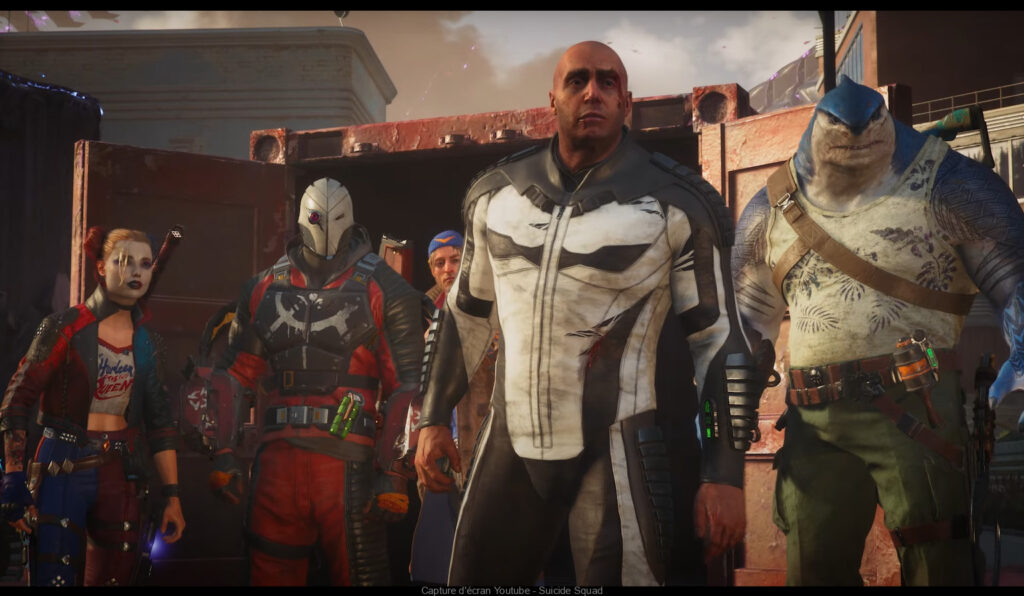
Character Portrayals and Performances
Rocksteady’s casting choices shine brightly.
The voice actors truly embody their characters. Kevin Conroy delivers a nuanced, gritty Batman, his voice echoing the Dark Knight’s tormented soul, while Tara Strong’s Harley Quinn balances volatile tantrums with surprising tenderness. Samoa Joe’s King Shark is a dry-witted joy, and their collective chemistry breathes life into the story.
Their performances become the game’s emotional anchor.
Each line delivered is packed with intention—whether joking, taunting, or expressing rare vulnerability—adding depth to every cutscene. These performances are not mere dialogue delivery; they’re the embodiment of iconic personas that have shaped the comic book world.
The supporting cast upholds the narrative’s integrity.
Though the game’s mechanical aspects may falter, the vocal drive behind each character adds weight to their presence in Metropolis, ensuring that each encounter resonates with the player. The voice work in Suicide Squad: Kill the Justice League, particularly from legacy talents like Conroy, enriches the gameplay, bridging the gap between comic book panels and the digital realm.
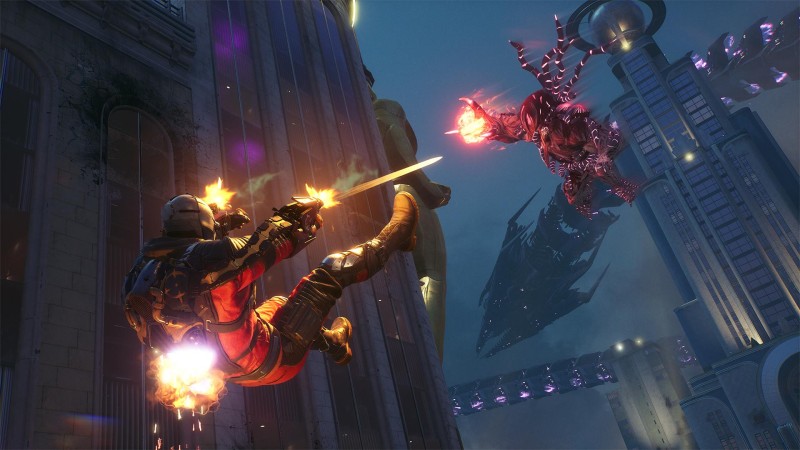
Gameplay Mechanics and Combat
The shift to third-person shooting is jarring, eschewing Arkham’s famed melee grace for gunfire and grenades. Rocksteady’s risk partly misfires – Suicide Squad’s charm is muffled beneath a barrage of bullets.
In contrast to Batman’s calculated brawls, Suicide Squad offers frenetic skirmishes with a focus on ranged weaponry. While gunplay dominates, it lacks the punch and diversity seen in genre benchmarks, diminishing its strategic allure.
Signature melee and traversal attacks strive to diversify, but often fall flat. Abating the true potential of Task Force X, the combat yearns for the depth and variety that Rocksteady is renowned for.
Shift from Melee to Shooter
Rocksteady has strayed from the hand-to-hand combat that put Arkham on the map, opting for barrage over brawn.
The studio’s pedigree in close-quarters combat feels underutilized, now overshadowed by a focus on third-person shooting mechanics that seem dissonant with the Squad’s notorious rough-and-tumble reputation. The tactile satisfaction of engaging in visceral melee seems lost in the hail of gunfire that characterizes most of the gameplay.
Fans of Arkham’s dance-like fights might find this departure a misstep; the crackle of firearms doesn’t quite match the rhythm of bones breaking and bodies thudding. The juggling act of melee, gunplay, and character abilities, is a symphony that unfortunately slips out of tune in Rocksteady’s latest.
The transition is bold, but it lacks the harmony between character lore and gameplay that could have preserved the squad’s rebellious spirit. Each pull of the trigger distances players from the intimacy of Arkham’s fabled fistfights.
Rocksteady’s new direction fails to deliver the punchy, memorable melee combat that many had hoped would be the Suicide Squad’s hallmark.
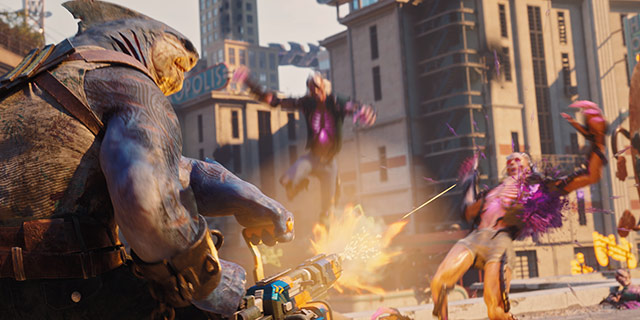
Character Abilities and Customization
Embracing the chaos of the Suicide Squad, character customization holds promise beneath its surface. Distinctly, each antihero brandishes unique abilities mirroring their notorious comic book personas. You wield these in combat to craft your method of madness, defining the way you engage with the city’s threats in a personal symphony of destruction.
Though the allure of tailor-fit combat styles is palpable, the current armory system feels like a missed opportunity for deeper engagement. With extensive skill trees, players can tune their villains to specific play styles, yet the outcomes mostly culminate in changes to gunplay rather than revolutionizing how each character fundamentally operates within the world of Metropolis.
Nevertheless, the potential for strategic depth is intriguing, with the right mix of skills and weapon mods able to create powerful synergy. The notion that you could engineer a perfect blend of chaos-causing talents and munitions, to turn the tide in a difficult skirmish, adds a layer of tactical complexity. It’s an opportunity to transform the battleground to your favor, with every choice in the skill tree feeling impactful.
Diving deeper into the customization, one can’t help but wish for an armament as vibrant and varied as the characters wielding them. A Boomerang that whirls with electric verve or Harley’s hammer crackling with energy – the possibilities for inventive weaponry are ripe for the picking. Within the current setup, though, these flights of fancy remain just that, unfulfilled fantasies of what could have been an audacious arsenal.
In essence, character customization offers the framework for a rich, personalized combat experience, yet falls short in execution. The balance between capturing the essence of the Suicide Squad and providing an engaging loot-based shooter is delicate, one that still beckons for that fine-tuning to reach its full, riotous potential.
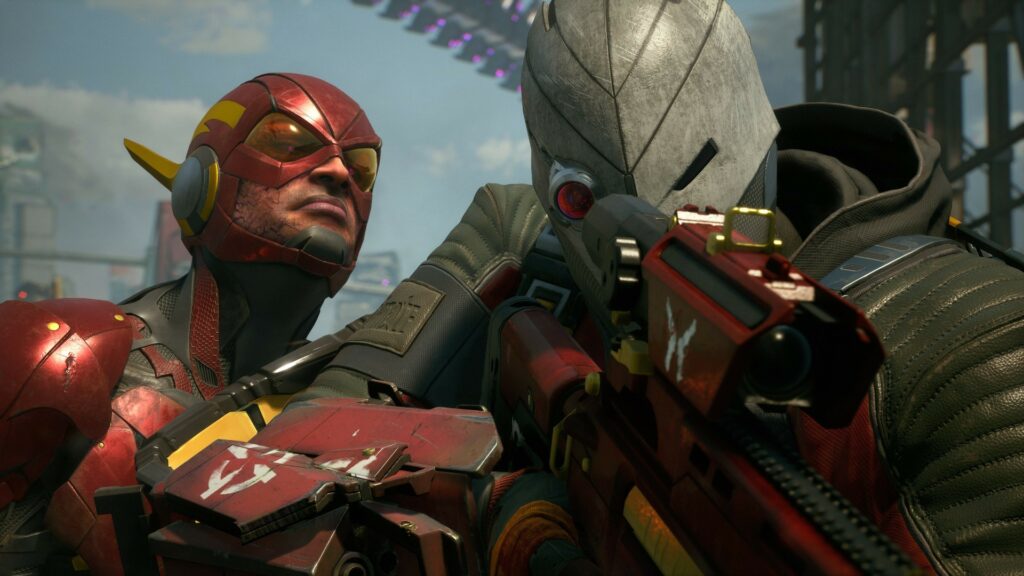
Mission Design and World Interaction
The urban sprawl of Metropolis tantalizes with its towering edifices and bustling avenues, but Suicide Squad: Kill the Justice League often fails to integrate these elements into its mission architecture. The city’s potential as a dynamic playground is underutilized, leading to a habitual pattern of rooftop engagements that quickly become monotonous, lacking the crafted, mission-specific challenges that could enhance player engagement and world immersion. Instead of being a vibrant stage for innovative conflict, the environment too often fades into the background, leaving a feeling of missed opportunities for more memorable interactive experiences.
Repetitive Objectives
Suicide Squad’s missions repetitively shuttle players from one rooftop to another, with little variety or inventive design to break up the monotony.
- Defending specific locations against waves of enemies
- Clearing out entrenched enemy forces from key points
- Escort objectives that involve safeguarding vehicles or characters
- Assault missions directed at taking down high-value targets
- Collection challenges that require gathering specific items
The game recycles these few mission types excessively, with each new assignment feeling all too familiar.
Once the novelty wears off, the grind of going through these same motions can feel like a chore rather than exhilarating gameplay.
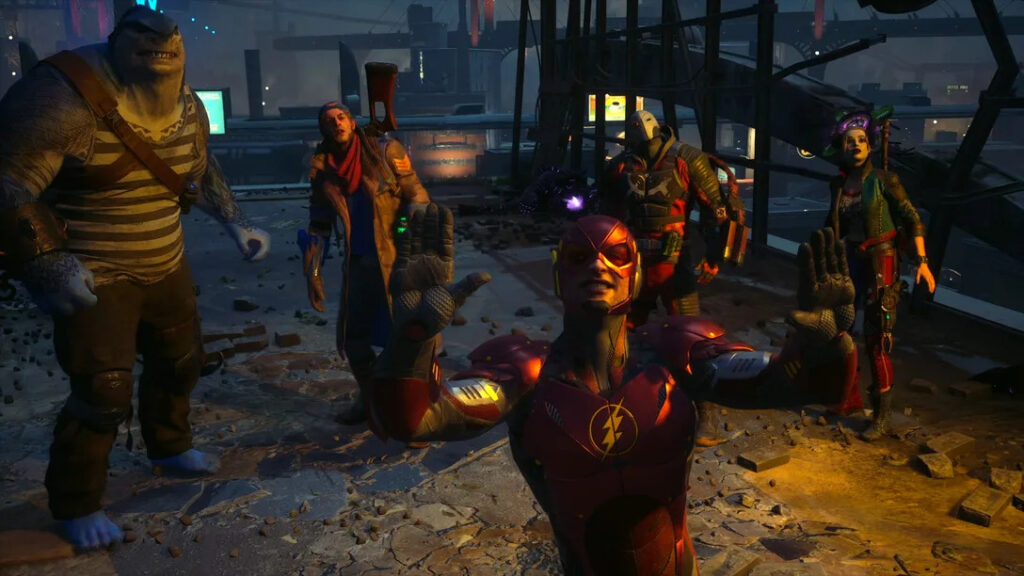
Boss Battles and Enemy Variety
Boss battles initially feature uninspired design, notably a giant purple cannon. Such choices lack the creativity one would expect from the DC Universe, often feeling like missed opportunities for innovation.
The showdowns with the Justice League, however, are more engaging. When combat does innovate, like in these encounters, it brings a sorely needed vibrancy to the experience.
But these moments are fleeting as boss fights typically regress into formulaic bullet sponges. Despite teases of more nuanced encounters, most lack the strategic depth that made Arkham’s rogues gallery iconic.
The enemy variety throughout Metropolis is underwhelming, contributing to the game’s repetitive nature. Even adding villain-themed minions or unique henchmen could have invigorated the by-the-numbers combat, creating a richer, more memorable challenge for the Suicide Squad to face.
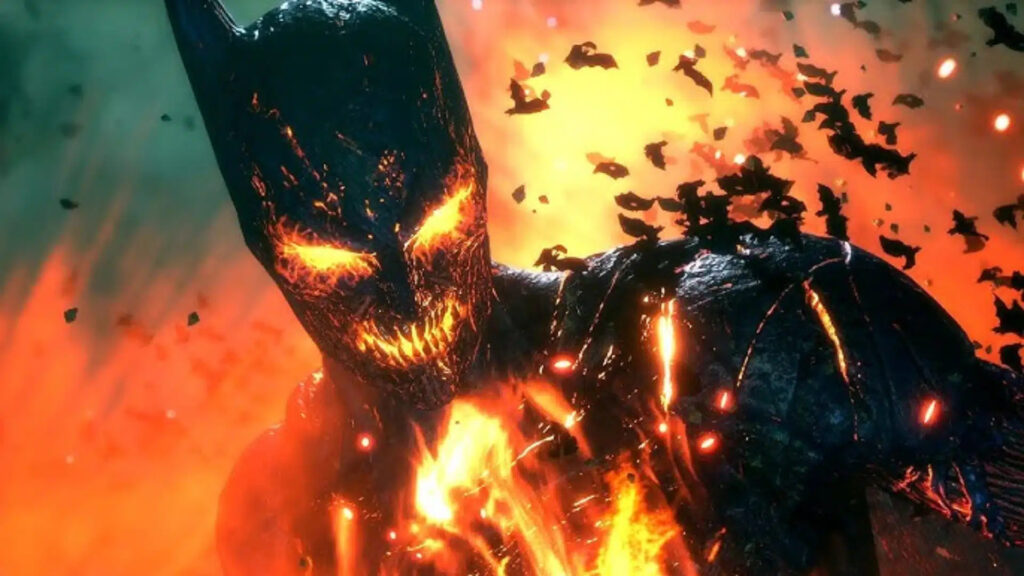
Post-Campaign Content and Longevity
Embarking on the post-campaign journey of Suicide Squad: Kill the Justice League, the initial thrill of unleashed chaos inevitably fades into a cycle of repetitious tasks. It’s here where the potential for an enduring live-service experience stands unfulfilled, weighed down by scarce variety and lack of compelling new objectives. The grip of this expansive city weakens, craving innovation that outlasts the story’s climax, desiring content that scales the heights of its towering ambition.
Endgame content thus far echoes the hollow promise of an amusement park closed for the season – attractions remain, but the magic has waned. It’s a critical juncture for Rocksteady, where the onus is on them to enrich Metropolis with diverse and dynamic missions that will respark intrigue and secure a persistent player base.
Looter-Shooter Elements
The fluctuating quality of gear is palpable, with loot drops often feeling like less of a treasure trove and more of a grab bag of disappointments. Enthusiasm wanes, cravings for impactful rewards unmet.
Character progression feels undernourished in the shadow of monotonous loot cycles, lacking the depth desired in vast weapon arsenals.
However, the glee of snagging high-tier loot can momentarily pierce the fog of repetition, providing brief surges of excitement.
This excitement is short-lived as the realization sets in that weapon variety lacks inspiration, with each gun feeling indistinct from the next.
True satisfaction comes not from the loot itself but from the chase, a psychological hook that fades as the pattern of predictability in gear acquisition becomes evident.
Ultimately, the thrill of the loot chase doesn’t match the heights of the adventure. Superior weapon design would infuse fresh energy into the arms cache.
Endgame Challenges and Replayability
Post-campaign, the promise of ongoing thrill dims, and missions recycle content, undermining the zest for long-term engagement. This stagnancy undermines commitment and stifles potential longevity.
The urge to replay dwindles rapidly amid predictable tasks. Challenge becomes a missing ingredient in the endgame stew.
Sadly, the remixed missions fail to evolve the combat. New layers of strategic complexity are notably absent.
Variety in objectives is severely lacking, leaving a hunger for inventive gameplay to maintain player interest.
The grind for gear, while initially compelling, becomes a tedious affair when it’s divorced from any meaningful progression or engaging gameplay that reinvigorates the player’s journey.
Ultimately, the game’s attempt at an enduring endgame falls short. Without meaningful expansion, ambition’s flame flickers out, leaving only the embers of what could have been.
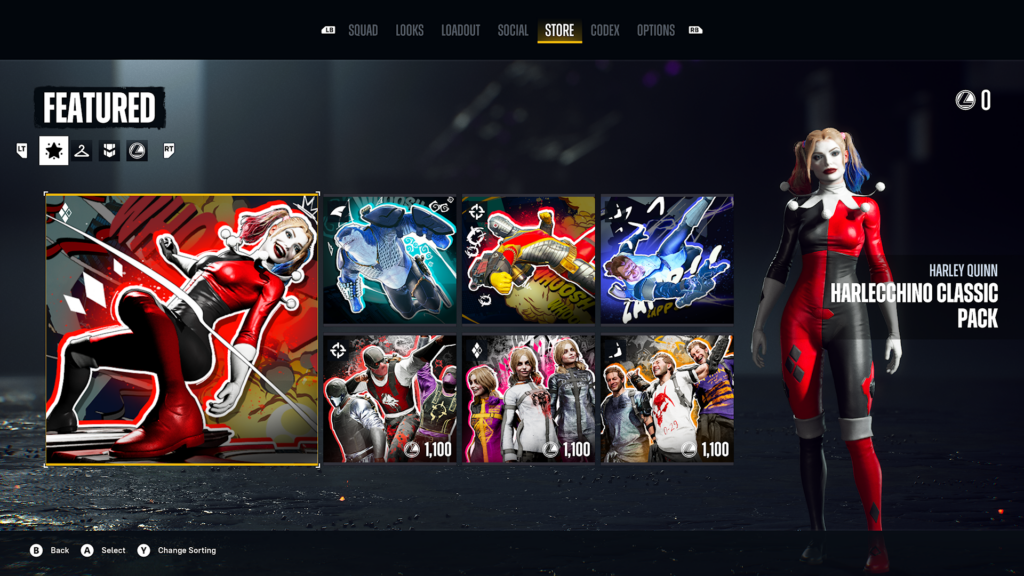
Suicide Squad Offers Free Seasonal Gameplay Content Despite Cosmetic Costs
Rocksteady’s commitment to providing no-cost seasonal updates contrasts sharply with the often-criticized pricing of in-game cosmetics.
Since release, players have been greeted with the promise of fresh narrative arcs, free of charge, which serve to broaden the game world without taxing wallets for content access.
Engaging in free seasonal content provides a route to diversify gaming experiences with new missions and characters that could potentially mitigate the tedium of post-campaign play.
Despite this, the gaming community must grapple with the fact that the allure of unique cosmetic items often carries a hefty financial burden, to complete their desired character aesthetics.
Liberated from the bounds of paid gameplay content, Suicide Squad still imposes a toll booth on the path to sophistication in superhero style.
Our Verdict
In the swirling tempest of expectations and reality, Suicide Squad: Kill the Justice League delivers a concoction of captivating narrative threads woven within a fabric of systemic discrepancies. While the story enchants with its dramatic cutscenes and rich characterizations, the gameplay loops around a core of repetitiveness that struggles to keep up with its more innovative genre contemporaries. It’s a game of conflicted identities, where glimpses of brilliance in the world of DC are overshadowed by an arsenal of mundane mechanics, with endgame offerings that seem to retreat rather than expand the horizons. Ultimately, Rocksteady’s ambitious blend falls just short of the mark, leaving us to ponder “what if” instead of reveling in what is.
For a limited time, we’re offering an exclusive sale on Suicide Squad: Kill the Justice League. Don’t miss your chance to immerse yourself in the thrilling world of Metropolis, where superheroes clash and villains rise. Engage in fast-paced combat, unlock unique abilities, and take on epic boss battles that will keep you on the edge of your seat.
Whether you’re a fan of the Suicide Squad comics or simply crave an action-packed gaming experience, this is the game for you. Don’t let this opportunity slip away – grab your copy now and save on the adventure of a lifetime.
Click here to unlock the chaos and embrace the anti-hero within: [Shop Now]
The Good
- Captivating narrative with well-made cutscenes and snappy writing.
- Phenomenal character design and voice acting, bringing the cast to life.
- Impressive graphical power and attention to detail in close-ups and cutscenes.
- Fast-paced combat with high skill ceiling and satisfying combos.
- Interesting abilities and modifications to unlock, adding depth to gameplay.
- Fun traversal mechanics and movement abilities.
- Standout boss battles, particularly the brawl against Green Lantern.
- Surprising appearances and departures of familiar DC characters.
The Bad
- Underwhelming loot systems and lack of imaginative weapons.
- Bland and repetitive mission design, lacking variety and standout moments.
- Lack of civilian activity and variety in the open world of Metropolis.
- Cluttered UI with excessive information on the screen.
- Repetitive post-game missions that feel like a rehash of campaign content.
- Struggles to keep up with more innovative games in the genre.
- Endgame offerings that retreat rather than expand the horizons.

